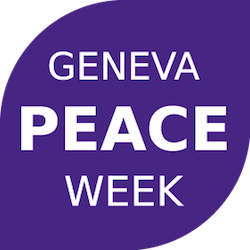Early warning systems and GIS: How data and mapping technologies can support peace
13 Nov 2017 01:00h
Event report
Ambassador Stefano Toscano, Director of the Geneva International Centre for Humanitarian Demining (GICHD), started the session by stating that we need to take pragmatic approach towards data from a geographic information system (GIS), especially how to turn a system for recording, into a system for observing and analysing, as it can provide clarity and evidence. This is because a GIS helps to find paths to action while giving visual means of accountability among stakeholders. Toscano then went on to introduce the panellists.
Mr Corrado Scognamillo, Early Warning Specialist at the Crisis Response Unit, United Nations Development Programme (UNDP), started by outlining how to harness data for early warning tools. To Scognamillo, early warning has several stages, from collection of information to taking action through analysis and use of data by decision-makers. With the existing wealth of information, connecting dots becomes an issue, which was addressed by making data flows more rational. This was done to increase emphasis on data and evidence based decision-making through combining various open source indexes into a single dashboard. He finished by stating that the organisational inertia together with balancing between scalability and context remains an obstacle.
Mr Daniel Hyslop, Research Director at the Institute for Economics and Peace (IEP), said that despite the focus on big data, there is still a need to put small data to better and more coordinated use. He demonstrated a predictive model which is based on a variety of open source indexes through aggregate data analysis. According to him, models do not need to be fully accurate, as structural measures taken to address conflict still contribute towards positive peace. He finished by pointing out the need for breaking down the silos between risk management tools.
Dr Andrew Thow, Humanitarian Affairs Officer at United Nations Office for the Coordination of Humanitarian Affairs (UN OCHA), presented OCHA’s developed analytical tool which seeks to combine various forms of data and information into a geospatial model. The purpose of such a tool is to provide open source-based information to multistakeholder decision makers, and enable a more coordinated humanitarian approach in terms of analysis and decision-making in, for example, capacity building. Challenges remain in how to ensure that the sector and individual personnel know how to incorporate the tool into their analysis, while ensuring data security and sensitivity.
Mr Olivier Cottray, Head of Information Management Division at the Geneva International Centre for Humanitarian Demining (GICHD), said that despite the progress being made with the incorporation of GIS and data in the work of institutions, there is still a long way to go for creating systems of engagement. He also mentioned the changing role of information managers, from gatekeepers into service enablers. He ended by presenting ‘GIS for Peace’, which was created to collect good practices and procedures in the peace sector.
Mr Einar Bjorgo, Manager of the UN Operational Satellite Applications Programme (UNOSAT) at the United Nations Institute for Training and Research (UNITAR), presented how geospatial data has so far been used for conflict prevention in Chad to defuse a potential water conflict. UNOSAT also seeks to provide capacity-building and satellite image for countries and other UN agencies.
Ms Jen Gaskell, Co-founder and Co-director of BuildUp, started by sharing how BuildUp seeks to bring new technology and innovations into peacebuilding in order to widen participation. She outlined key lessons, namely that the context still matters, together with understanding the risk to yourself and to others. She highlighted the issues of data privacy, security and sensitivity, while making data accessible to decision-makers. She finished by pointing out that while technology can widen participation, it is just a tool.
Ms Renée Larivière, Deputy Director General at Interpeace, started by saying that a GIS is a powerful tool and has evolved to cover peace activities. According to her, a GIS can provide us with robust data in mapping conflicts. She then highlighted the importance of combining hard and soft data. Such a combination is essential, as a GIS can also escalate conflicts if used poorly. She finished by pointing out analysis needs to keep sensitivities and context/nuances in mind at all times.
Open discussions ranged from other existing UN data tools, which could be even more sophisticated than the ones presented. Hyslop pointed out that the slow moving institutional root causes of conflicts are not forgotten in the analysis. The importance of providing the right information to the right decision-makers at the right time, was seen as key for the effective use of data analysis, as such personnel skill-sets need improving.
Toscano closed the debate by summarising that the models provide a tool for risk management, but that it is important to have a shared understanding and process of analysis across different sectors. He then thanked the panellists and audience, thus concluding the event.
Related topics
Related event

